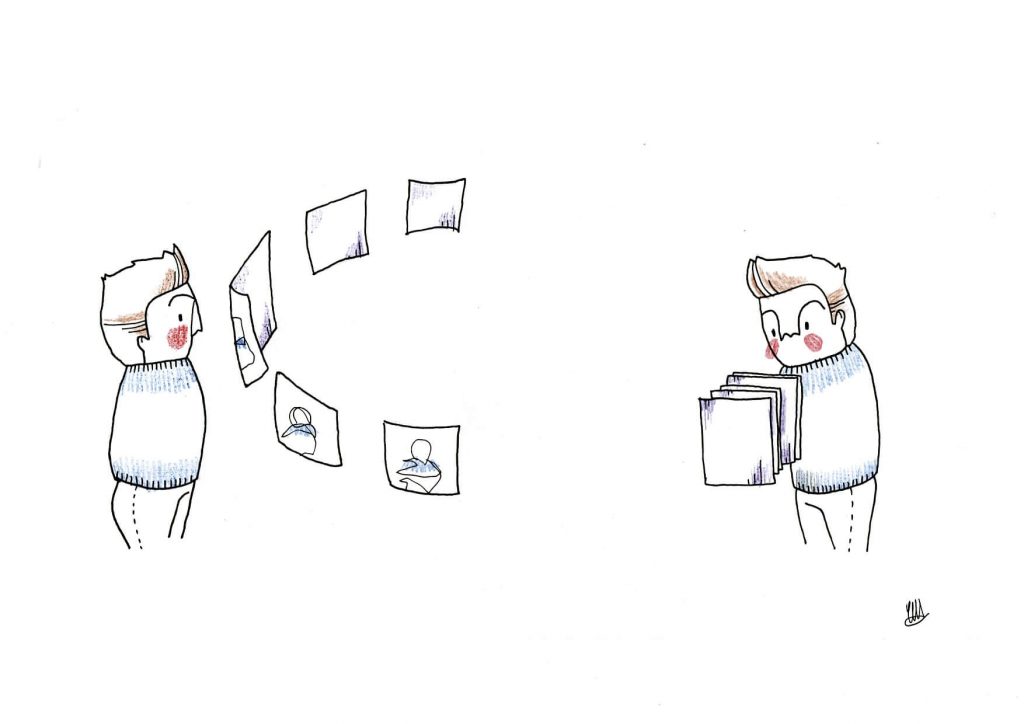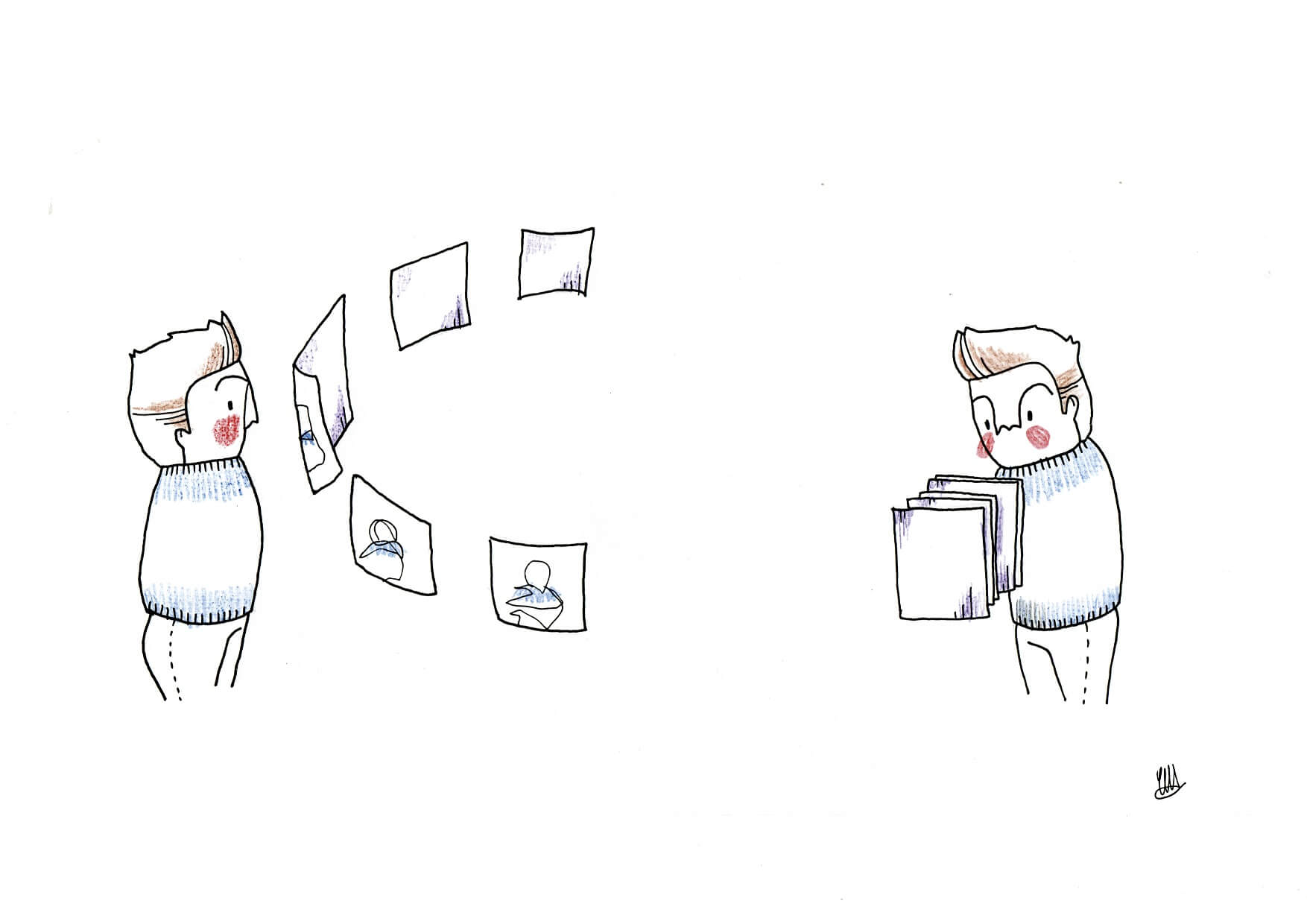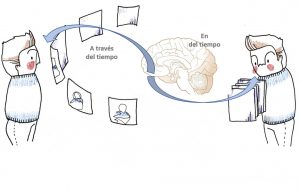The NLP time line we could say that is the result of how we structure the perception of time in the brain.
How can the NLP time line help us?What is our type of the NLP time line?Is it worth changing it?
Neuroscience and NLP series – Neuro-linguistic Programming
Some time ago I had a lot of interest in approaching the NLP Time Line. It is a good topic to start a series of articles relating NLP (Neurolinguistic Programming) with neuroscience and the fundamentals of behaviour in the brain.
NLP talks about brain software, about mental programs. Would it be interesting to connect this software with the hardware? That is, to link the programs with the brain substrates; with neuroscience. In this way, we could better understand the brain foundations of behaviour.
This is something that Neuroquotient® can do for us.To see it, we will start, then, by connecting the time line with the brain.
A model within NLP. The NLP Time line
We could say that Neurolinguistic Programming is constituted by a series of techniques and models for personal development and improvement.Techniques derived from modeling experts with special success in these fields.
One of these models and / or techniques is the Time line.
In a simple way, the NLP time line deals with how the brain organizes events (past, present and future).If the human brain can remember, perceive and imagine, it must somehow organize itself to distinguish one thing from another.
Our first foray into NLP in 2001 (just before training as a Practitioner) was through the book ‘ Introduction to NLP’ by Joseph O’Connor and John Seymour . They make reference to the NLP time line quoting the book ‘ Time line Therapy and the Basis of Personallity ‘ by Tad James and Wyatt Woodsmall.
You can also check interesting NLP resources at NLP Coaching.
An exercise to determine the type of our Time line
Then, in the NLP workshop, they asked us to conduct an exercise to help us figure out our NLP Time line.
The exercise is about remembering and imagine several situations and then they try to see where our images are placed in the space outside us.
A guide to find these pictures in our memory and imagination can be as follows:
‘Remember a breakfast when you went to the elementary school.
Then, remember a breakfast during the last holidays
Think of breakfast this morning.
Imagine having a breakfast during the next holidays.
Finally, imagine a breakfast when you are very old, after retiring.
It is very likely that for each situation you see an image, where are these images placed?
Before going on reading, we could spend some time doing this exercise.In this way we won’t be conditioned by the explanations that follow.The exercise will be useful to know in what type of the NLP time line we are.
Doing the previous exercise and after reading the text that follows, we can answer the question What type of the Time line we get closer?
The two most frequent types of the NLP time lines: ‘through time’ and ‘in time’
Tad James describes two most common types:
‘through time’ and ‘in time’

In the first case (‘through time’) people perceive the images forming a more or less opened parable. With the present in front, and near, of the person, the past to the left and the future to the right.Past and future more distant the further away the present moment is.
In the second case (‘in time’) the future is what we can perceive in front and the past behind.
Since the first time I did the exercise, we have asked many people around us to do it.We find two types of perceptions of the NLP time line that, we might say, are very majority.
A perception, ‘through time’, exactly as described by Tad James. (‘over time’)Images in front of the person, arranged along a parabola.
And another perception when people can only see an image at the same time and in front of us. As if we had a collection of photos and we were seeing them one by one. The one in view hides the others. It is not identical to what Tad James describes, but we will call this type of perception in the same way, ‘in time’.
Influence on behaviour of the time perception according the NLP time line.
Do the types of time perception regarding the Time line influence the way each person behaves?
We could say, without being afraid to be wrong, that yes.
We can observe that people with perception ‘through time’ have a greater tendency to structure thoughts and to establish causal connections (influence of the past, in the present and the future).They tend to plan and usually have a high motivation for studying and learning.It seems logical, learning helps to feel prepared to face the uncertainty of the future.
Conversely, people with perception ‘in time’, have a higher focus to the present and they easily jump from one idea to another, with a tendency to lateral thinking. They are more motivated by creative tasks and by the variety of them.In addition, they express their thoughts more spontaneously.
Now we can check if our neuro behaviours are according with the type of the NLP time line that we have identified with the previous exercise.
From now on we can open many questions up:
What are the brain fundamentals of the NLP time line?
What type is better for each one of us?Is it worth changing?
How could we improve, if we believe it necessary?
In the next post we can see the possible answers that we can find to move forward together.



